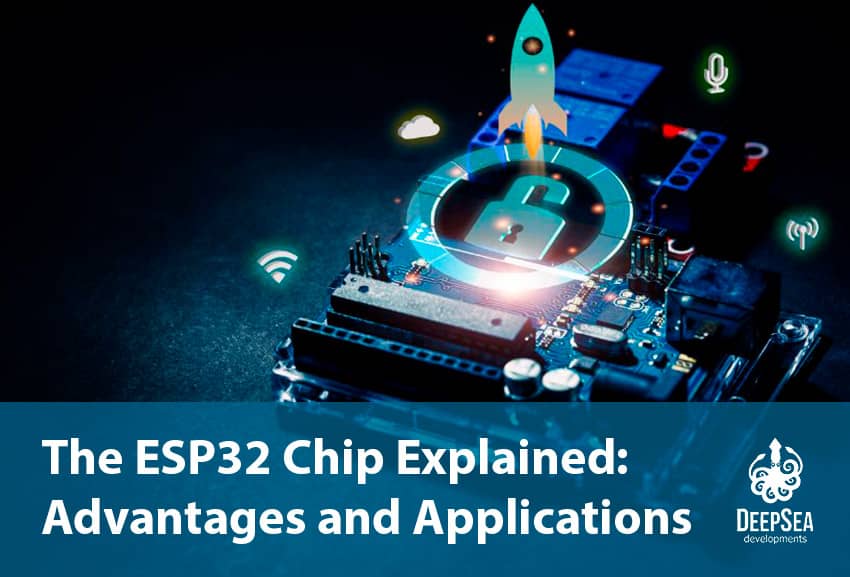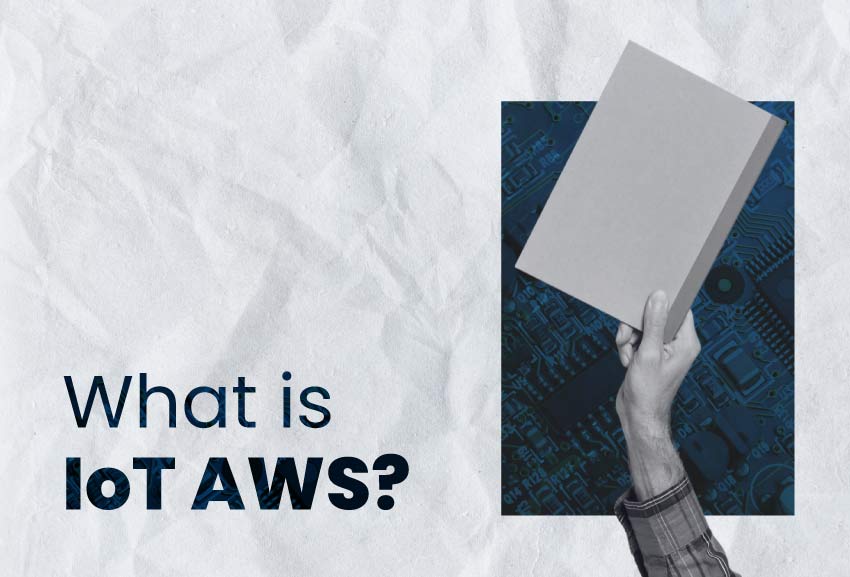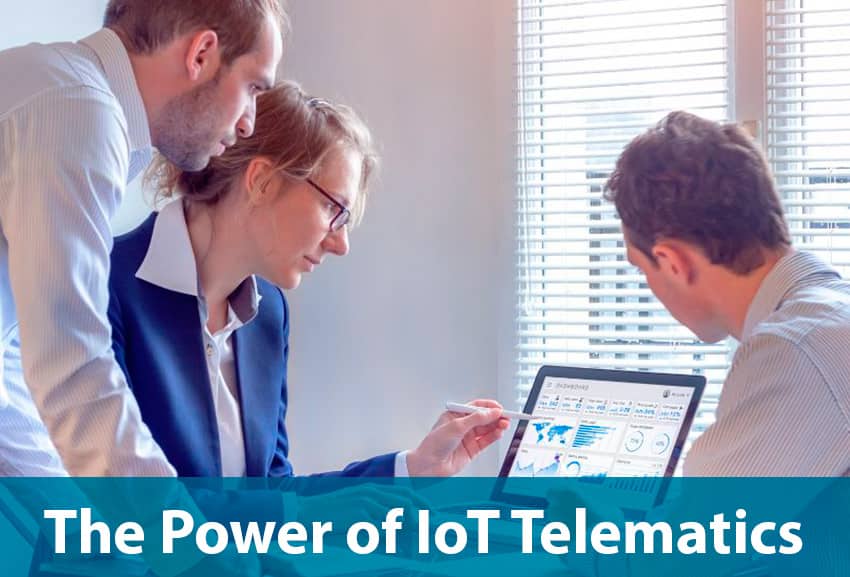ESP32 chip has recently been establishing itself as one of the most popular and versatile chips on the market. It is used for multiple IoT applications (electronics prototyping service), wireless communication, robotics, home automation and audio/video processing. In addition to having a fairly low cost compared to its competitors and having ultra-low consumption functions (see hardware design).
And if that were not enough, it is part of the devices supported by Arduino, which opens the door to thousands of libraries, projects and support from one of the largest developer communities.
Let’s go deeper into the ESP32 specs, its advantages and applications.
What is an ESP32 chip?
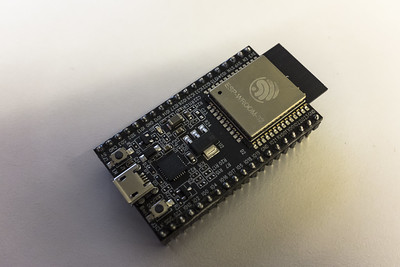
The ESP32 is a versatile and widely-used microcontroller and Wi-Fi/Bluetooth system-on-chip (SoC) produced by Espressif Systems.
A SoC, is essentially an integrated circuit that takes a single platform and integrates an entire electronic system onto it, for an specific application. Contrary to a simple microcontroller (like Atmega324p Arduino Uno), that offers several general usage peripherals instead of a specific set of tools for one application.
In the case of ESP32, this was designed to be an IoT SoC with already integrated Wifi, Bluetooth, and Cryptographic hardware acceleration to allow the user to access the internet. You can check it in the next diagram that specifies all its peripherals:
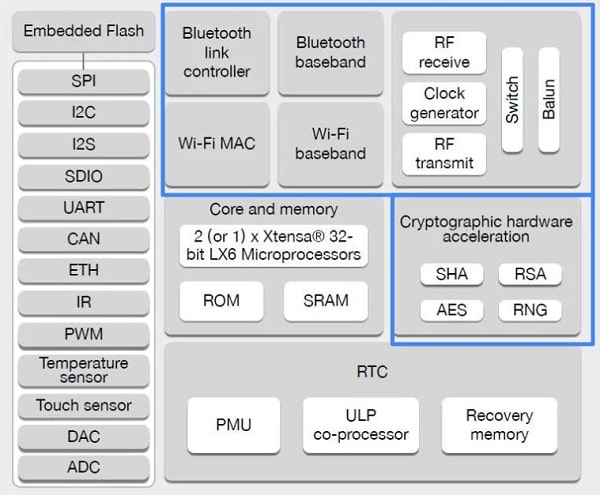
Additional to this, the ESP32 chip comes integrated with 4Mb FLASH and around 500 Kb of RAM. This is fundamental to support IP and TLS stack and all the matters related to internet communication that consume too much resources. Even using Wifi or BT you still have extra ram for the rest of the code. And in the worst scenario you can always get better spec chips with integrated PSRAM of 8Mb and 32Mb of Flash.
The most important thing is, if we need to change to a higher memory capacity, we can still use the same code with a couple of simple configurations. Without needing to wire or design a new PCB like most of the microcontrollers in the market.
ESP32 microcontroller applications
ESP32 entered the scene in 2016 as an improved version of the ESP8266. It includes Bluetooth, more memory, processing speed, dual core and a lot of peripherals (Touch, CAN, SDIO, I2S).
Thanks to these features, the ESP32 is being used in several areas:
1. IoT devices: The ESP32 is often used to build IoT devices due to its built-in Wi-Fi and Bluetooth capabilities. It can be used to create smart home devices, environmental sensors, and more.
2. Home automation: ESP32-based devices can control lights, thermostats, and other home appliances through Wi-Fi or Bluetooth connections, making it a popular choice for DIY home automation projects.
3. Wireless communication: It can be used for wireless communication in various applications, such as creating mesh networks, remote control systems, and data transmission between devices (see IoT protocols).
4. Robotics: ESP32 can be used as the control unit in robotics projects, providing wireless control and communication capabilities to robots.
5. Wearable devices: Due to its compact size and low power consumption, the ESP32 is suitable for wearable IoT devices, including smartwatches, fitness trackers, and health monitoring products.
This technology can be used to collect and log data from various sensors, such as temperature sensors, humidity sensors, and accelerometers. This data can be stored locally or transmitted to the cloud for analysis.
6. Industrial automation: ESP32 microcontroller can be integrated into industrial systems for remote monitoring and control, as well as for predictive maintenance. This is a great ally for industrial IoT applications, since companies can improve their operations with the help of this technology.
7. Environmental monitoring: It can be used to build environmental monitoring systems for measuring air quality, pollution levels, and weather conditions.
8. Education and prototyping: The ESP32 is popular in educational settings for teaching electronics and programming due to its affordability and versatility. It’s also widely used for rapid prototyping of IoT and embedded systems projects (see prototype examples).
9. Security Systems: It can be used in DIY security systems, including cameras, alarms, and access control systems.
10. Healthcare: ESP32 can be used in several healthcare solutions, such as patient monitoring, medication reminders, and telemedicine devices.
Advantages of using ESP32
Cost
Using ESP32 reduces the cost of hardware. Commonly, the cost of a ready-to-use ESP32 development board in the market is around 6 USD (see PCB benefits). Which is significantly cheap for a dual-core chip with built-in wifi and bluetooth. Other alternatives like NRF on average cost 20 USD.
Frameworks
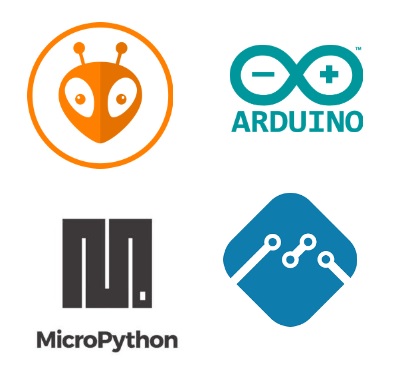
Thanks to the ESP32 specs, it is supported on many platforms using different SDKs and programming languages. Here are some of them:
- Arduino (C/C++)
- IDF,ADF (Mostly C)
- Platform (C/C++)
- MicroPython (Python)
- Mongoose OS (JavaScript/C)
- espruino (JavaScript)
This allows you to have different options when developing firmware and save time by using pre-existing libraries for specific applications; you can get great advantage of this by hiring a professional embedded software development service.
Only by going to the manufacturer’s official website can you find specialized SDKs for IoT such as IDF, audio ADF, ESP-Mesh wireless connectivity, and ESP-Matter.
These SDKs also include common solutions for a product or prototype, such as storage management, command console generation, OTA, and WIFI provisioning.
Hardware
Espressif constantly brings new, more powerful and specialized chips to the market. This is the case of the new line of ESP32-S, ESP32-C and ESP32-H chips.
Supporting different wireless protocols and ecosystems such as:
- Wifi
- Bluetooth Classic
- Bluetooth BLE
- Thread
- Matter
- Zigbee
- EspNow
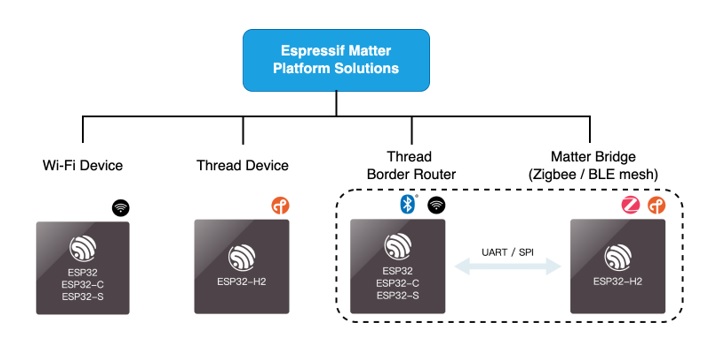
Some of these chips already support:
- USB OTG
- TWAI
Final takeaways on the ESP32 chip
As you could see, ESP32 features make it a great choice for building new products for different industries related to the Internet of Things. This is specially useful for IoT product development services, which we provide to startups, entrepreneurs, and companies in the United States, and abroad.
If you believe the applications of the ESP32 are suitable for your project, don’t hesitate to contact our team. Click on the button below to book a free consultation, and we will gladly help you out.

